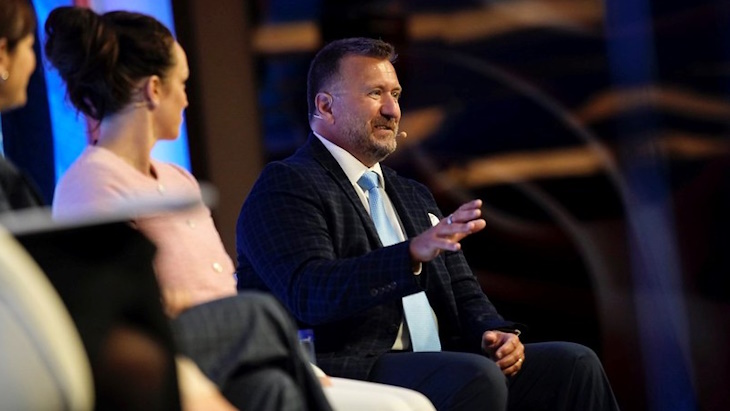Tractebel Engineering becomes owner’s engineer for Pallas
Belgium's Tractebel Engineering has signed a contract to be owner's engineer for the planned Pallas research reactor to be built at Petten in the Netherlands. The facility will replace the existing High Flux Reactor (HFR) that has been in operation since 1961 and take over its role as a major supplier of the world's medical radioisotopes.
The contract was signed by Hermen van der Lugt, managing director of the foundation responsible for Pallas, and Luc Vanhoenacker, deputy general manager nuclear of Tractebel Engineering, a division of GDF Suez. The value of the contract was not disclosed, but the role of owner's engineer is likely to last for about ten years, Pallas said.
Pallas and Tractebel Engineering will now form a project team to provide technical and project management personnel to support Pallas. Van der Lugt said the new team will build a multi-purpose reactor that will play a "leading role" in the global production of medical isotopes.
Pallas said there will be a European tender process for the design of the new research reactor, followed by a preparation and application for the so-called KEW (Kernenergiewet) licence. The design and licensing process of the new reactor is expected to take between four and five years. The design, construction and commissioning of the Pallas reactor combined will take about ten years and the lifetime of the new reactor is expected to be at least 40 years.
The Pallas reactor is to be of the "tank-in-pool" type, with a thermal power of around 55 MW, and able to deploy its neutron flux more efficiently and effectively than the HFR.
The European Commission in July 2013 concluded that an €80 million ($105 million) state loan for the construction of a replacement for HFR met EU rules. The Dutch government gave its approval in January 2012 for the construction of a replacement for the ageing HFR. The Ministry of Economic Affairs, Agriculture and Innovation said that the government and the province of Noord-Holland would each provide €40 million ($52 million) for the first phase (design, procurement and licensing procedure) of the Pallas reactor.
Since it started in September 1960, the 45 MW HFR has been largely shifted from nuclear materials testing to fundamental research and the production of medical radioisotopes. The reactor - operated by the Nuclear Research and Consultancy Group (NRG) on behalf of the European Union's Joint Research Centre (JRC) - has for a long time supplied about 60% of Europe's and 30% of the world's supply of medical radioactive sources.
The Pallas project organization was part of NRG until the end of 2013, since when it has been part of an independent foundation, the Foundation Preparation Pallas reactor. The foundation is responsible for the successful completion of the first phase of the project - the design, tendering and licensing procedure. It is also responsible for attracting funding for the second phase - construction and commissioning.
Minister of economic affairs Henk Kamp announced on 17 October that the government would provide a loan to NRG and Netherlands' Energy Research Centre (ECN) to enable the continued operation of HFR.
ECN conducted research in 2013 into the technical state of its nuclear facilities. The results indicated that substantial investments were needed to keep HFR in operation until the Pallas reactor begins operating.
ECN and NRG do not have the necessary funds themselves to finance the required investments, primarily due to lack of revenues as HFR has been out of action for repairs and maintenance for extended periods. In 2013, for example, the reactor was offline for a total of nine months. Having failed to secure short-term private financing to make the necessary upgrades at HFR, the companies requested assistance from the Dutch government in November 2013.
The loan, up to a maximum of €82 million ($106 million), will be provided at market interest rates and paid in instalments. However, the loan will be provided on two conditions. Firstly, the companies had to ensure that HFR can operate safely for a further ten years. Secondly, the outlook for the company must be positive enough that it will be able to repay the loan through the sale of medical radioisotopes.
Researched and written
by World Nuclear News
_59102.jpg)
_49833.jpg)

.jpg)






_88592.jpg)

